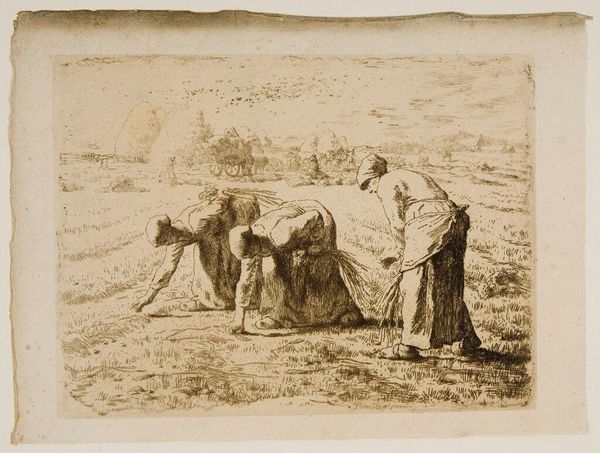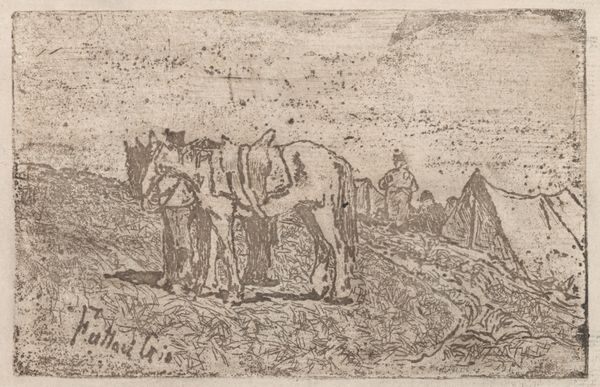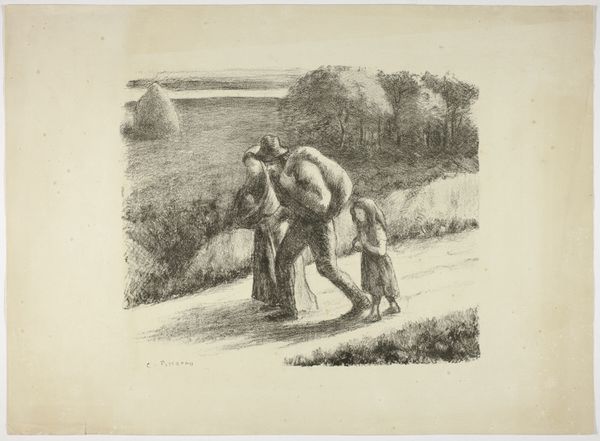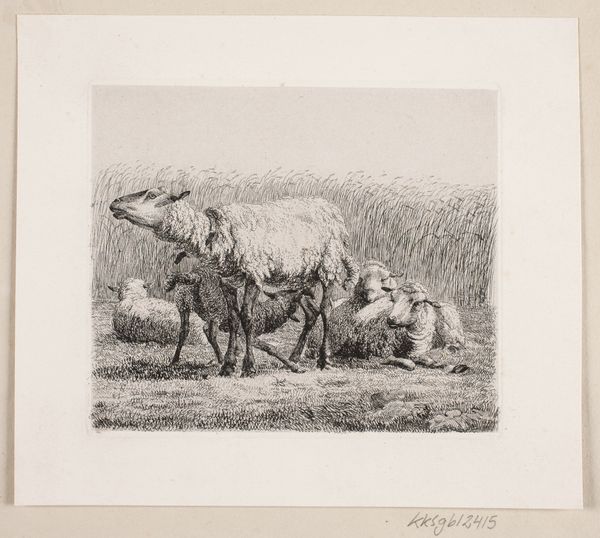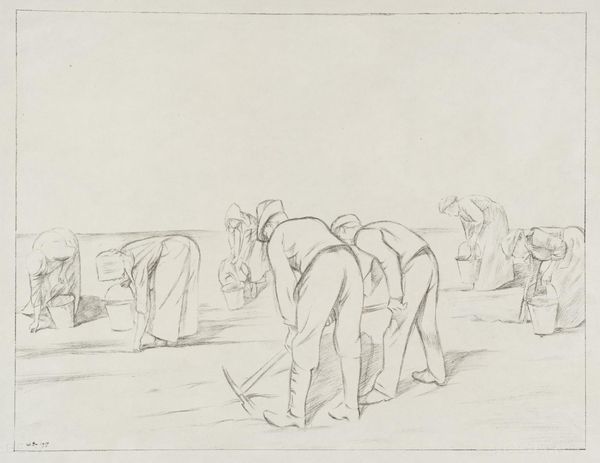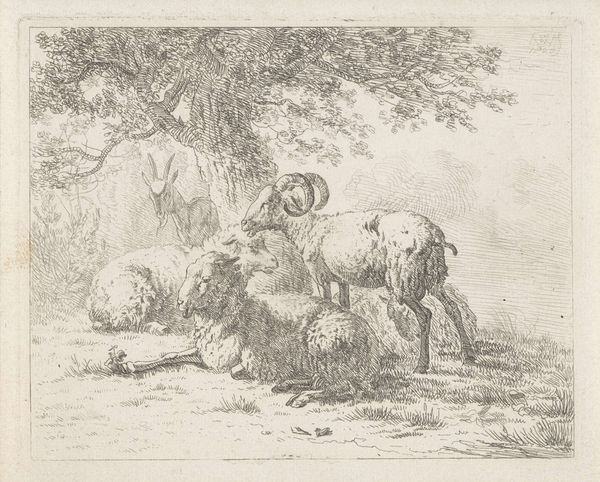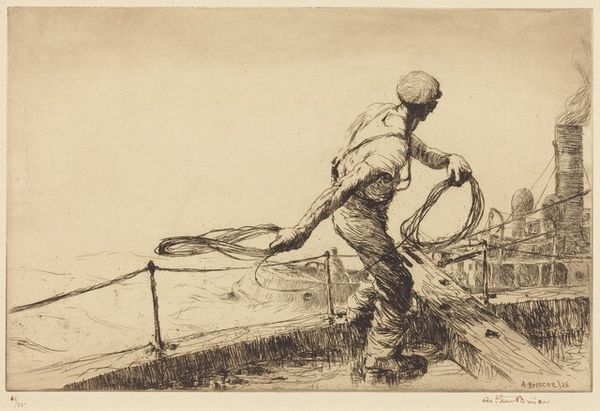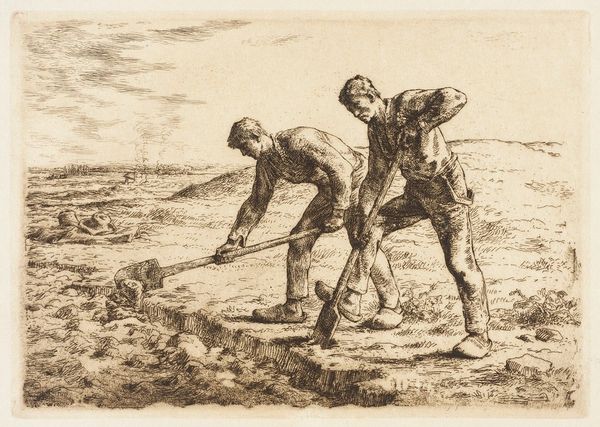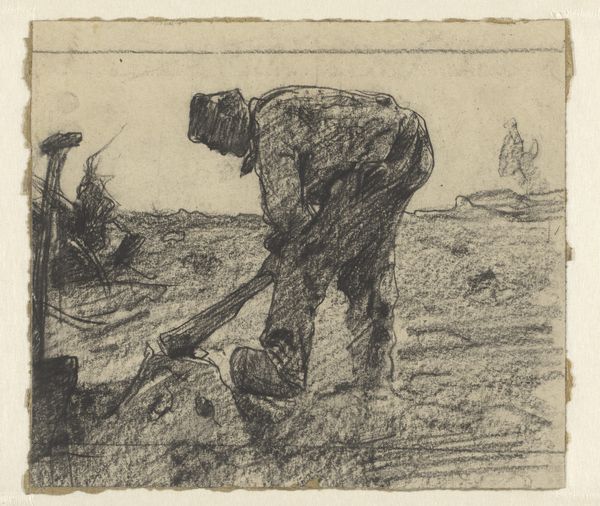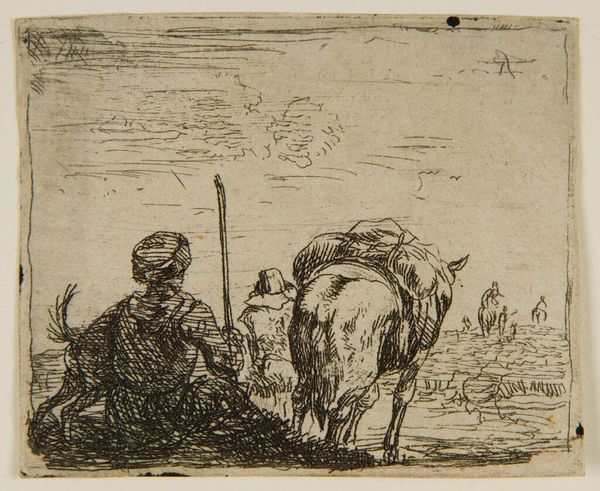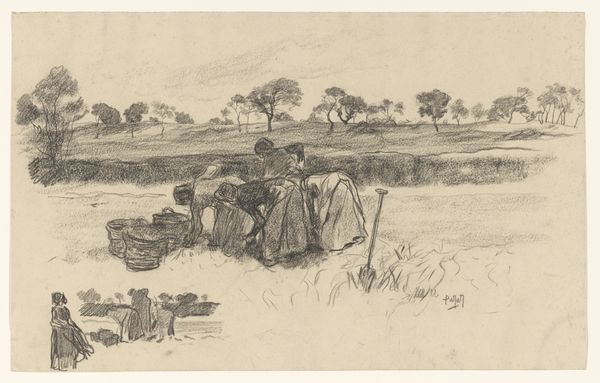
Copyright: CC0 1.0
Curator: I'm struck by how Millet’s "Gleaners," portrays such grueling labor with a sense of somber dignity. Editor: Yes, dignity achieved through back-breaking labor. Look at the materiality: the etched lines mimicking the rough texture of the field and the garments. This process highlights the reality of the women's work. Curator: Absolutely, and consider the historical context. These women are gleaning—picking up leftover grains after the harvest. It’s a visual representation of the rigid class structure and the limited opportunities available to rural women. Editor: Limited indeed. The very act of gleaning underscores their marginalization and highlights the stark inequalities of 19th-century French society. It's a powerful indictment of the system. Curator: Indeed. It forces us to confront uncomfortable truths about power, poverty, and the social realities that often go unseen. Editor: Understanding the material conditions and the women's labor enriches our experience. Curator: It certainly gives us much to reflect on, doesn't it? Editor: It does. The intersection of art, labor, and society is always ripe for exploration.
Comments
No comments
Be the first to comment and join the conversation on the ultimate creative platform.
